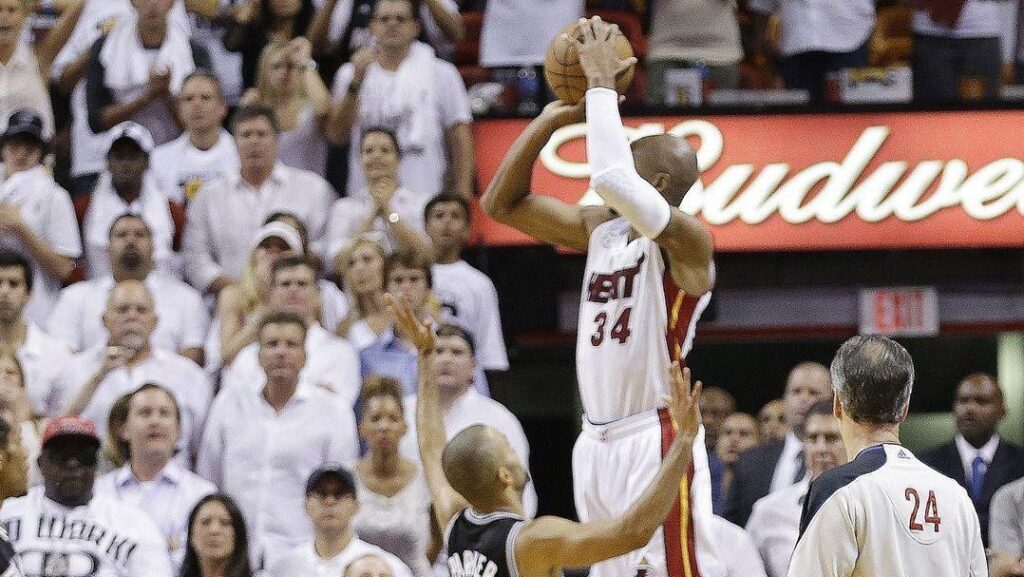
With 2022-23 marking the Miami Heat’s 35th season, the Sun Sentinel is unveiling a series of “5 at 35″ reflections from staff writer Ira Winderman, who has covered the entirety of the franchise’s 3 1/2 decades.
After opening the series with a look at the five greatest games in the team’s history, five franchise-altering moments, the team’s biggest celebrity fans, five of the biggest personalities over the years and five notable Heat Lifers, today we look at five rivalries that have helped define the franchise since its 1988 inception.
1. New York Knicks (1997-2000). Put it this way, raise your hand if you weren’t suspended at some point during the peak of this postseason rivalry that was part basketball part MMA? Anyone? Any hands?
No, not as enduring, by any means, as Boston Celtics-Los Angeles Lakers. But in four postseasons, arguably carried as much of a punch (actually punches).
In the 1997 Eastern Conference semifinals, it was 4-3 Heat. In the 1998 first round, it was 3-2 Knicks. In the 1999 first round, it was 3-2 Knicks. And in the 2000 East semifinals it was 4-3 Knicks, with Pat Riley blowing up the roster thereafter.
From P.J. Brown spinning Charlie Ward like a top . . . to Jeff Van Gundy holding on for dear life to Alonzo Mourning’s leg, it was a rivalry that had it all. And don’t even get started on Larry Johnson vs. Mourning.
2. Boston Celtics (2010-12, 2020-22). There were two stages of the rivalry that bridged the Big Three era to the current rendition of the Heat.
Act 1 featured Dwyane Wade, after a 4-1 loss to the Celtics in 2010, proclaiming “I’m not going out like this again,” after a second consecutive first-round Heat ouster (having lost to the Atlanta Hawks in the 2009 first round).
Two months later, the Heat added LeBron James and Chris Bosh, going on to take down the Celtics 4-1 in the 2011 second round and then 4-3 in the 2012 Eastern Conference finals. The rivalry revved up again in the 2020 Disney World playoff bubble, when the Heat eliminated the Celtics 4-2 in the Eastern Conference finals, a series highlighted by Bam Adebayo’s game-saving block against Jason Tatum at the end of Game 1.
Then, after a year’s hiatus, the Celtics got the best of the Heat 4-3 in this past season’s Eastern Conference finals, a dramatic series that included Jimmy Butler’s 47-point performance in the Heat’s Game 6 victory in Boston.
3. Indiana Pacers (2004, 2012-14). There were a pair of stinging elements in this two-era rivalry.
First, in 2004, during Dwyane Wade’s rookie season, the Pacers knocked the Heat out of the playoffs with a 4-2 victory in the Eastern Conference semifinals, after the Heat’s dramatic seven-game victory over New Orleans in the first round. Two months later, Lamar Odom, Brian Grant and Caron Butler would be traded from that Heat roster to the Los Angeles Lakers for Shaquille O’Neal.
Then, during the final three seasons of the Big Three run, the Heat knocked the Pacers out of the playoffs each year, 4-2 in the 2012 East semifinals, 4-3 in the 2013 East finals and 4-2 in the 2014 East finals. It was a rivalry that featured Udonis Haslem vs. Tyler Hansbrough, as well as the Roy Hibbert “principle of verticality.”
4. Dallas Mavericks (2006, ‘11). During both of those years the teams met in the NBA Finals, each series with a dramatic outcome.
In 2006, it was Dwyane Wade willing the Heat to victory, much to the chagrin of Mavericks owner Mark Cuban.
In 2006, it was Dirk Nowitzki carrying Dallas to victory at the conclusion of the Heat’s first Big Three season, much to the delight of Cuban.
5. San Antonio Spurs (2013, ‘14). Again a pair of NBA Finals meetings with different, gut-wrenching outcomes.
For the Spurs it was the sting of Ray Allen’s series-saving 3-pointers for the Heat in Game 6 that led to their seven-game demise, in what became the Heat’s third championship.
Then, the following year, the Spurs exacted revenge with a convincing 4-1 series win that brought an end to the Big Three era, with LeBron James returning to Cleveland in free agency a month later.
Up next: We begin our positional evaluations, with the top five shooting guards over the years, as the franchise turns 35.
()
